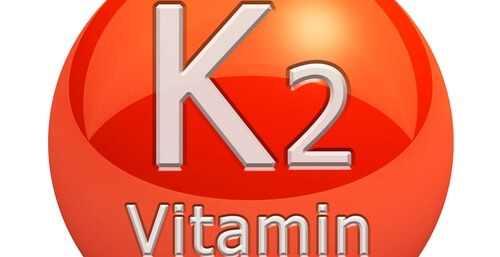What’s the Big Buzz about Vitamin K2?
Health Benefits of Vitamin K2
 Vitamin K2 is being attributed as beneficial for many different health issues, for both general well being and cosmetic reasons. Vitamin K2 controls many essential functions of the body, primarily blood clotting and bone metabolism. Vitamin K2 is an activator of numerous proteins that prompt the formation of blood clots. People lacking in vitamin K2 have an impaired blood clotting ability, increased bleeding in the gums, heavier menstrual cycles and nosebleeds.
Vitamin K2 is being attributed as beneficial for many different health issues, for both general well being and cosmetic reasons. Vitamin K2 controls many essential functions of the body, primarily blood clotting and bone metabolism. Vitamin K2 is an activator of numerous proteins that prompt the formation of blood clots. People lacking in vitamin K2 have an impaired blood clotting ability, increased bleeding in the gums, heavier menstrual cycles and nosebleeds.
Vitamin K2 stimulates two proteins that transports calcium to the bones. There are studies suggesting vitamin K2 protects against myeloma and lymphoma, common blood-related cancers. In fact, K2 proves to have significant anticancer properties in more types of cancer, such as liver, stomach and lung malignancies as well as prostate. (1, 5, 6, 7)
Cosmetic Uses
Cosmetically, vitamin K2 does not help at a systemic level, however when applied topically it helps with a multitude of issues. People apply vitamin K2 for numerous cosmetic reasons such as the removal of spider veins, reducing bruises, scars, stretch marks and burns. Topically it is used to treat rosacea, a skin condition that causes redness and pimples on the face. For post-surgical procedures, vitamin K2 speeds up skin healing and reduces bruising and swelling. Studies presented to the Academy of American Dermatologists in 2003 show that topical vitamin K2 works to reduce circles under the eyes and to reduce bruises. When combined with topical vitamin A, vitamin K is even more effective for dark circles.
Dietary Sources of K2
Data published in the January 2006 issue of the Journal of Agricultural and Food Chemistry, stated the best way to obtain dietary K2 is through meat products. The ideal meat products are organ meat (mainly liver), chicken, beef, bacon, and ham. Egg yolks (not egg whites), high-fat dairy products, in particular hard cheese made with whole milk provides valuable amounts of this fat-soluble nutrient. Animals have the ability to synthesize vitamin K2 from the vitamin K1 they obtain from grass. Therefore, meat, eggs, and dairy from grass-fed animals contain higher levels of vitamin K2 compared with grain-fed animals. The only vegetarian source of vitamin K2 is Natto due to a specific strain of bacteria used in the fermentation process.
Dosage (4)
| Age | Males | Females | Pregnancy | Lactation |
| 0 to 6 months | 2.0 mcg | 2.0 mcg | N/A | N/A |
| 7 to 12 months | 2.5 mcg | 2.5 mcg | N/A | N/A |
| 1 to 3 years | 30 mcg | 30 mcg | N/A | N/A |
| 4 to 8 years | 55 mcg | 55 mcg | N/A | N/A |
| 9 to 13 years | 60 mcg | 60 mcg | N/A | N/A |
| 14 to 18 years | 75 mcg | 75 mcg | 75 mcg | 75 mcg |
| 19+ years | 120 mcg | 90 mcg | 90 mcg | 90 mcg |
More About Vitamins and Minerals
Learn more about vitamins and minerals by enrolling in Infofit’s Principles of Sports Nutrition (PSN) Course or the Certified Sports Nutrition Advisor (CSNA) course. These fitness nutrition programs are designed to enhance student comprehension of sports nutrition, fitness and alternative health care for personal and professional application. Learn how to prevent disease and stay well life-long, using the information and knowledge to care for and nourish your body. The CSNA Education Program will undoubtedly provide students with the most updated and superior cutting edge information that science has to offer in sports nutrition, anti-ageing, health & fitness.
Written by Cathie Glennon, BCRPA-SFL, CPT
More About Calcium Deficiency
Are you deficient? Check out this interesting and informative article by Helen Sanders. Are You Suffering From Calcium Deficiency? 7 Signs You Should Look Out For
References
- https://www.ncbi.nlm.nih.gov/pmc/articles/PMC3767046/
- https://www.medicinenet.com/script/main/art.asp?articlekey=50505&page=2
- https://www.webmd.com/beauty/face/over-the-counter-beauty-tips
- https://www.medicinenet.com/vitamins_and_calcium_supplements/page13.htm
- https://www.ncbi.nlm.nih.gov/pubmed/16670066
- https://www.ncbi.nlm.nih.gov/pubmed/17088989
- https://www.ncbi.nlm.nih.gov/pubmed/12888897



